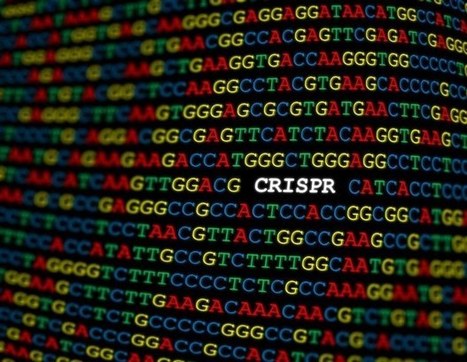The gene-editing tool CRISPR has been heralded as a scientific miracle destined to eradicate diseases from sickle-cell anemia to cancer, or decried as "the genetic scissors that tailor the human gene pool," an ethically risky technology driving us toward a designer babies. Case Western Reserve University researchers see a different opportunity in the CRISPR technique: A new "universal biosensing" point-of-care medical device--similar to the existing commercial blood-glucose sensor--that rapidly and accurately detects troublesome viruses like human papillomavirus (HPV) or parvovirus B19 (PB-19).
To do that, researchers converted the CRISPR "recognition induced enzymatic signal" to an electrical signal, which was then used to detect the biomarkers for those viruses. Dai is the lead author on a paper about the process which landed the cover story for Angewandte Chemie, a journal of the German Chemical Society. Dai said existing tests for those viruses take three to five days for an accurate result and can be expensive, while the biosensor envisioned by Case Western Reserve researchers would provide accurate results in under an hour.
According to the U.S. Centers for Disease Control, HPV is a common virus that can lead to six types of cancers later in life. Nearly 80 million Americans are infected with some type of HPV, spread through intimate skin-to-skin contact. Parvovirus B19, or parvo, spreads through respiratory secretions, such as saliva or nasal mucus, when an infected person coughs or sneezes. The virus can present a range of symptoms, depending on a person's age and overall health. About two out of 10 people infected with this virus will have no symptoms. Others may have only a mild rash..... E-CRISPR is the name Dai and co-authors gives to what they call an "electrochemical platform" that relies on the precision of the CRISPR technique to identify and quantify viruses in the blood. What sounds complex is actually quite simple, Dai said, "The CRISPR technique works so that it cuts all of the nonspecified single-strand DNA around it once the target is recognized, so we program to electrochemically probe this activity," he said. "No virus--no cutting, it's that simple. And the opposite is true: If CRISPR starts to cut, we know the virus is present."
Published in the J. Angewandte Chemie (September 30, 2019).:
https://doi.org/10.1002/anie.201910772



 Your new post is loading...
Your new post is loading...







